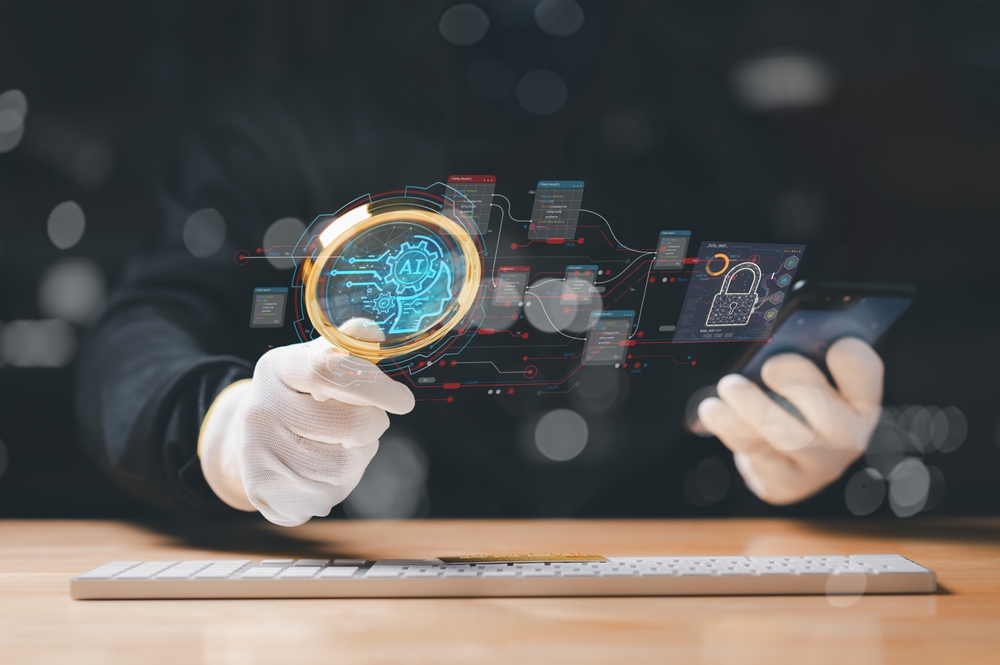AI in Check Fraud: Are Fraudsters Staying One Step Ahead?
- Fraud continues to rise
- Fraudsters are now utilizing AI to strengthen scams
- The battle between AI-powered fraud and AI-powered fraud detection is only just beginning
Recently, OrboGraph's Marketing Manager and Fraud Detection Specialist, James Bi, had an interesting conversation with an industry expert on mRDC and Check Fraud. The expert noted that "Fraudsters are one to two generations ahead of financial institutions when it comes to leveraging new technologies such as AI."
This seems to be the case. Payments Dive notes in a recent Payments Brief that, as artificial intelligence (AI) becomes more advanced, it's creating a paradox in the world of financial fraud. On one side, banks and payment processors are using AI to better detect and prevent fraud. However, on the other side, sophisticated criminals are also leveraging AI to create more convincing and harder-to-detect scams.
As Payments Dive notes:

- Artificial intelligence is now sophisticated enough that bad actors can use it, after taking over a consumer’s account, in ways that simulate that person’s behavior, creating another point of frustration for payments companies battling fraud, fintech professionals said.
- Advanced AI programs are now capable of mimicking the behavior of a real person, allowing the fraudsters to evade financial institutions monitoring for unusual activity, panelists said at the annual Money 20/20 conference in Las Vegas Monday.
- “The ability to just spin up a model and create 10,000 people that look real has gotten much higher,” said Brian Dammeir, head of payments for the San Francisco-based financial services company Plaid.
AI Mimicking Real User Behavior and Generating Convincing Counterfeits?
Payments Dive goes on to note that fraud is on the rise -- in fact, Americans lost $10.2 billion to fraud in 2023, a 14% increase over 2022, according to the Federal Trade Commission. The international police organization INTERPOL points out that fraudsters are indeed aided in no small part by advanced technology.
So, even as financial institutions rely on monitoring consumer spending patterns to spot account takeovers, AI models can now be trained to transact like a real person, making these fraud detection methods less effective.

Furthermore, there are many reports that fraudsters are using generative AI to create convincing counterfeit checks. Generative AI has the ability to take previous samples of checks, and create countless counterfeits that can be printed on a standard desktop printer. And, because FIs do not receive the physical copy of the check when deposited mRDC, these fraudulent checks are able to bypass many check fraud defenses if they are not utilizing image forensic AI.
Multiple Fraudulent Checks
As noted in the article -- and in our Modernizing Check Fraud Detection blog -- FIs need to take a multilayered technology approach to check fraud.
Bernadette Ksepka, deputy head of product management for the Federal Reserve Bank of Boston, stressed the need to have multiple fraud checks in place.
The Fed is working on tools banks can use to spot anomalous transactions and help consumers and merchants confirm transactions, she said.
“Ultimately, I think it’s going to take a multi-level safeguarding approach,” Ksepka said.
Remember, there is no single technology that can detect a majority of fraudulent checks. However, FIs can utilize vendors that deploy a multitude of technologies, including:
- Behavioral analytics
- Transactional analytics
- Image forensic AI
- Rules engine
- Consortium data
- Dark web monitoring

When evaluating vendors, it's vital that you understand what technologies they are utilizing and how they are used to work harmoniously as a total check fraud detection solution. More importantly, make sure the vendor is constantly updating the technologies to stay ahead of fraudsters!
It is time for FIs to be proactive, rather than reactive.